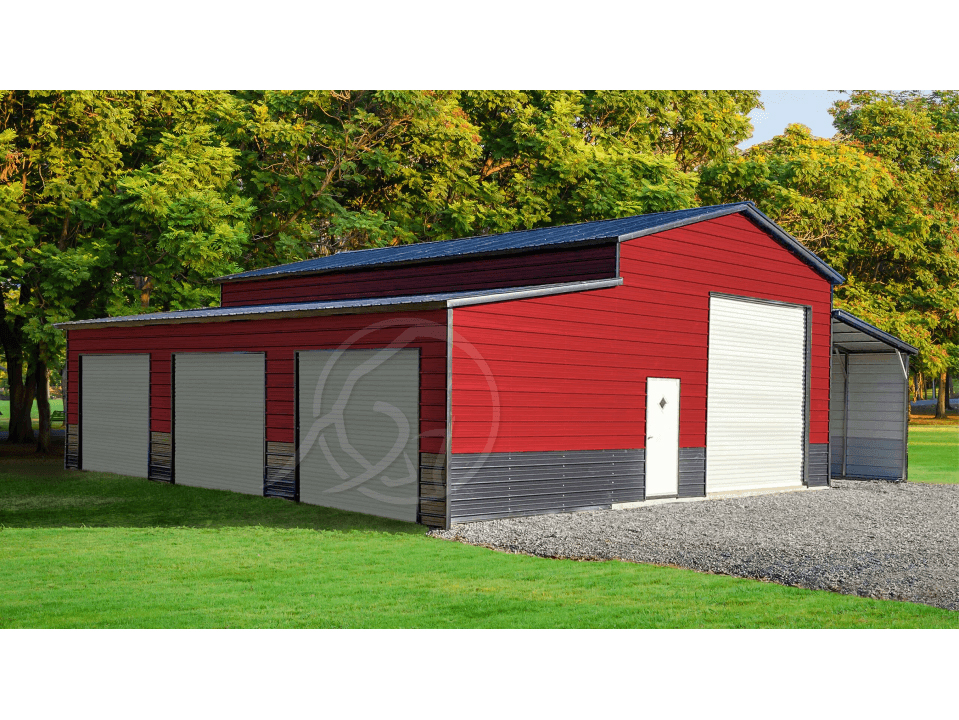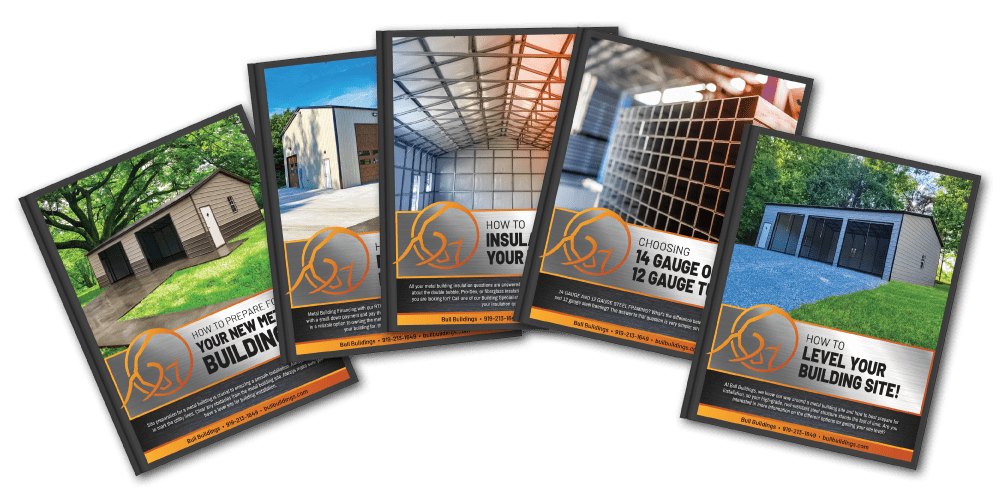
Building a metal building with precision requires careful planning, meticulous site preparation, and attention to detail during construction. Whether you are embarking on a residential, agricultural, or commercial building project, following a structured approach ensures a successful outcome. This guide outlines the four essential steps to help you achieve a metal building project that stands the test of time.
Step 1: Planning and Design
Planning is the cornerstone of any successful metal building project. Start by determining the purpose of your building. Whether it is for commercial, residential, or agricultural use, knowing the end goal will guide the design process.
Next, select an appropriate location. Consider factors like soil quality, access to utilities, and local zoning laws. It is important to obtain any necessary permits early in the planning phase to avoid delays.
Work with a professional designer or architect to create a detailed blueprint. This blueprint should include precise measurements, materials needed, and structural specifications. A well-thought-out design minimizes errors and ensures the building meets all requirements.
Step 2: Preparing the Site
Site preparation is the next critical step in building a metal building. Begin by clearing the site of any debris, vegetation, or existing structures. This ensures a clean and level surface for construction.
Conduct a soil test to assess its bearing capacity. This will determine the type of foundation needed. Some soils may require additional reinforcement to support the building’s weight.
After clearing and testing, lay the foundation. Depending on the building size and soil type, you may use a concrete slab, piers, or a perimeter foundation. Ensure the foundation is level and cured properly before proceeding.
Step 3: Erecting the Framework
With the site prepared, you can now focus on erecting the framework. This involves assembling the primary structure, including columns, beams, and rafters. Start with the main columns, ensuring they are aligned and anchored securely to the foundation.
Next, attach the beams and rafters to the columns. Follow the blueprint closely to maintain structural integrity. Use temporary supports if necessary to hold components in place during assembly.
Once the primary structure is in place, install secondary framing elements like girts and purlins. These provide additional support and attachment points for the building’s exterior panels. Double-check all connections to ensure they are tight and secure.
Step 4: Installing the Exterior and Interior
The final step in building a metal building is installing the exterior and interior components. Start with the exterior panels, attaching them to the framework using screws or bolts. Ensure each panel is aligned properly to prevent leaks and gaps.
Next, install insulation if required. This helps regulate temperature and reduces energy costs. Choose insulation materials based on your climate and building use.
After the exterior is complete, move on to the interior. This may include installing walls, ceilings, and flooring. Depending on the building’s purpose, you might also need to add electrical wiring, plumbing, and HVAC systems.
Detailed Planning: Beyond the Basics
Detailed planning goes beyond just the initial design and permits. Engage with local contractors and suppliers to understand the availability of materials and labor. Secure your budget by getting multiple quotes and setting aside a contingency fund for unexpected expenses.
Incorporate sustainability into your design. Consider energy-efficient windows, solar panels, and rainwater harvesting systems. These not only reduce environmental impact but can also lower operating costs.
Finally, establish a timeline. Outline each phase of the project with specific milestones. Regularly review progress to ensure the project stays on track and address any issues promptly.
Optimizing Site Preparation
Optimizing site preparation involves more than just clearing and testing. Analyze the site’s topography to understand drainage patterns and prevent water accumulation. Install proper drainage systems to protect the foundation from water damage.
Consider the accessibility of the site for construction vehicles and equipment. Create temporary access roads if necessary. Ensure there is enough space for material storage and maneuvering during construction.
Coordinate with utility companies to install necessary services like electricity, water, and sewage. Doing this early prevents delays and allows for seamless integration with the building’s infrastructure.
Precision in Framework Assembly
Precision is key when assembling the framework. Use laser levels and plumb lines to ensure all components are perfectly aligned. This prevents structural issues and ensures the building is safe and stable.
Follow the manufacturer’s instructions carefully when assembling prefabricated components. Each piece is designed to fit together in a specific way. Deviating from the instructions can cause misalignment and weaken the structure.
Regularly inspect the framework during assembly. Look for signs of stress or damage and address them immediately. This proactive approach maintains the integrity of the building.
Ensuring Quality in Exterior and Interior Installation
Quality installation of exterior and interior components is important for the building’s longevity. Use high-quality fasteners and sealants to secure panels and prevent leaks. Regularly inspect the exterior for any signs of damage or wear.
When installing insulation, ensure it covers all areas without gaps. Proper insulation improves energy efficiency and comfort. Choose materials that are durable and suited for your climate.
For the interior, select finishes that match the building’s use. Commercial buildings might need durable flooring and industrial-grade wiring. Residential buildings could focus on aesthetics and comfort. Always comply with local building codes and standards to ensure safety and quality.
Other Important things to Remember
- Choosing the Right Materials
Selecting the right materials is important for the success of your metal building project. Opt for high-quality steel that meets industry standards for strength and durability. This ensures your building can withstand environmental stresses and has a long lifespan.
Additionally, consider the type of coating for your steel. Galvanized or coated steel provides extra protection against rust and corrosion. This is especially important if your building will be exposed to harsh weather conditions.
- Hiring Experienced Professionals
Hiring experienced professionals can make a significant difference in the quality of your metal building. Look for contractors and builders with a proven track record in metal construction. Their expertise can help prevent common pitfalls and ensure the project runs smoothly.
Experienced professionals also bring valuable insights into efficient construction practices. They can recommend the best materials, techniques, and timelines to fit your specific needs. This collaboration can save you time and money in the long run.
- Ensuring Compliance with Local Regulations
Compliance with local regulations is a non-negotiable aspect of any construction project. Research the building codes and zoning laws in your area before starting. This will help you avoid legal issues and potential fines.
Make sure to obtain all necessary permits before breaking ground. This includes permits for construction, electrical work, and plumbing if applicable. Proper documentation ensures that your project adheres to all safety and regulatory standards.
- Incorporating Safety Measures
Safety should be a top priority throughout the construction process. Implementing safety measures protects both the workers and the integrity of the building. Ensure that all workers are trained in safety protocols and use personal protective equipment (PPE).
Regular safety inspections can identify and mitigate potential hazards. Address issues promptly to maintain a safe working environment. This proactive approach helps prevent accidents and keeps the project on schedule.
- Maintaining a Clear Communication Channel
Clear communication is essential for coordinating all aspects of your metal building project. Establish regular meetings with your team to make necessary adjustments (if there are any), discuss progress, and address concerns. Open communication helps prevent misunderstandings and keeps everyone aligned with the project goals.
Use project management tools to track milestones and deadlines. These tools can help you stay organized and ensure that all tasks are completed on time. Effective communication and organization are key to a successful project.
Precision and Quality with Bull Buildings
At Bull Buildings, we understand the importance of precision and quality when building a metal building. Our expertise ensures every project is executed flawlessly from start to finish. Trust us to provide you with the highest quality metal structures tailored to your needs.



